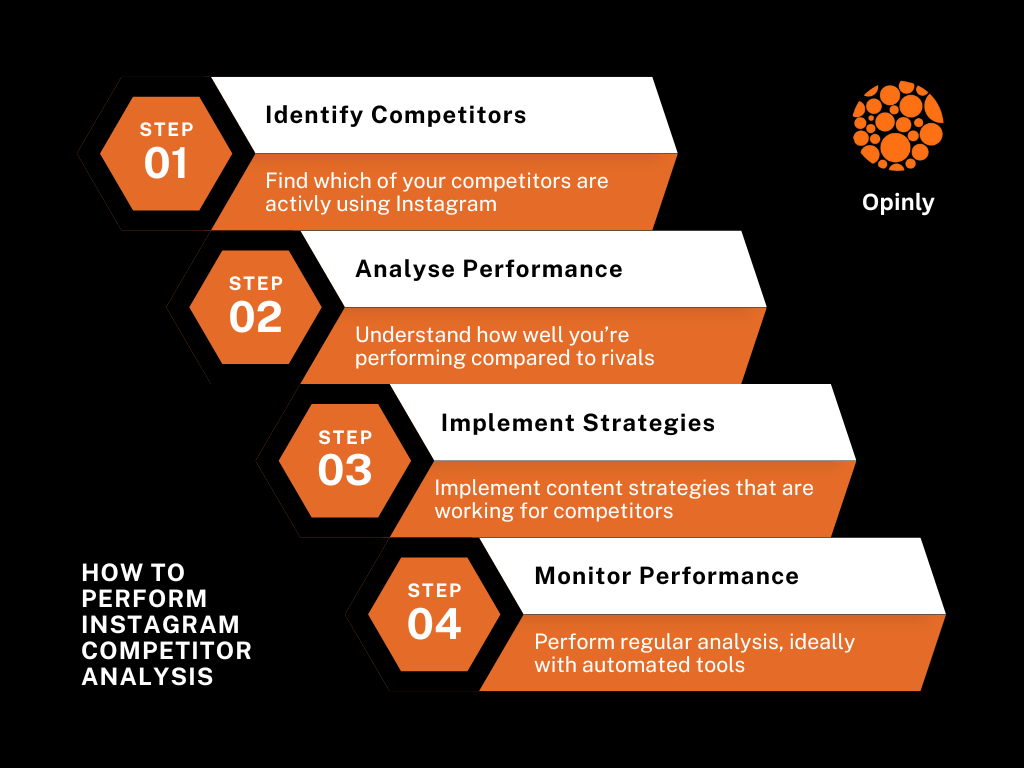How to Create a Position Matrix
Learn how to create a positioning matrix with this comprehensive guide.

Have you ever wondered how successful businesses know exactly where they stand in the market compared to their competitors?
How do they figure out the right message to send to their customers? The answer often lies in a powerful tool called a positioning matrix, which is a key component of brand positioning.
In marketing, positioning is all about how your product or service is perceived by your target audience. It’s not just about what you sell, but how customers see and feel about what you offer compared to your competitors.
A positioning matrix helps businesses visualize this by mapping out key factors, like how your pricing and features stack up against others in the market.
Why is this important? By defining your position clearly, you can make smarter decisions about your marketing, pricing, and messaging. A strong positioning matrix ensures you’re targeting the right customers with the right message, and it helps you stand out in a crowded market.
In this article, we’ll explore what a positioning matrix is, its core components, how you can build one for your business, and why it’s such a valuable tool for growth.
Let’s dive into how you can use a positioning matrix to sharpen your business strategy and gain a competitive edge.
What is a Positioning Matrix?
A positioning matrix, also known as a brand positioning matrix, is a simple yet powerful tool that helps businesses understand where they stand in the market compared to their competitors. Think of it as a map that shows you exactly where your product or service fits in the bigger picture.
Clear Definition of a Positioning Matrix
At its core, a positioning matrix is a visual representation—usually in the form of a grid—that plots where your brand, product, or service sits in the market based on specific factors. These factors could include things like price, quality, customer satisfaction, or any other attribute that’s important to your industry, and they help visualize your brand's position in the market. The goal is to see, at a glance, how your offering compares to others, and where it falls in the eyes of your target audience.
The Role of a Positioning Matrix in Marketing Strategy

Four-quadrant positioning matrix showing product placement
In the world of marketing, positioning is important because it defines how your brand is perceived by customers. The positioning matrix plays a key role in this strategy by helping you understand where you fit in—and how you can stand out, forming the basis of your brand positioning strategy.
It’s not just about being the cheapest or the highest quality; it’s about finding a unique spot in the market where your business can thrive.
By using a positioning matrix, businesses can make informed decisions about how to differentiate themselves from competitors.
For example, if you find that most of your competitors are focused on low-cost products, you might decide to position your brand as offering higher quality, even if it comes at a higher price. This gives you a clear direction for your marketing efforts and ensures that your messaging resonates with the right customers.
How Businesses Use a Positioning Matrix to Map Their Position in the Market
Businesses use a positioning matrix to identify where they currently stand and where they want to be in the future. By plotting themselves and their competitors on the matrix, they can see gaps in the market and assess their competitive position. These gaps represent opportunities where your business can shine.
For example, if the matrix shows that most competitors are offering products at a mid-range price with average quality, there might be an opportunity for your business to offer a premium product with exceptional quality at a higher price.
By targeting this unoccupied space, you can attract a specific group of customers who are willing to pay more for better quality.
Key Components of a Positioning Matrix

Positioning matrix displaying competitive landscape
A positioning matrix, or competitive positioning matrix, is built around several key components, each helping a business figure out its place in the market and how to stand out.
Let’s break down these essential parts in simple terms, along with examples to show how they work in real life.
1. Target Audience
The target audience, or target market segments, is the group of people your product or service is meant for. Understanding who your customers are is the first step in positioning your brand. Are they young professionals? Families with kids? Seniors looking for convenience? Knowing your audience helps you tailor your product, messaging, and marketing.
Example: If you’re selling a new high-tech running shoe, your target audience might be fitness enthusiasts and athletes aged 18-35 who are looking for advanced performance features in their sports gear.
2. Unique Selling Proposition (USP)
Your Unique Selling Proposition (USP) is what sets your product or service apart from others. It's that special feature or benefit that makes customers choose you over the competition. Your Unique Selling Proposition is important because it forms the backbone of how you position yourself in the market.
Example: Imagine you're running a coffee shop, and your Unique Selling Proposition is that you only use organic, locally-sourced beans roasted on-site. This differentiates you from other coffee shops that may offer similar products but don't focus on quality and sustainability as much as you do.
3. Market Segmentation
Market segmentation is the process of dividing the overall market into smaller groups based on shared characteristics, like age, income, interests, or location. Each segment has its own unique needs, and understanding these differences helps you position your product to appeal to the right people.
Example: Let's say you sell skincare products. You could divide your market into segments such as teenagers who need acne treatments, adults looking for anti-aging solutions, and people with sensitive skin who need hypoallergenic products. Each segment would require a different approach and messaging.
4. Brand Perception
Brand perception is how people see and think about your brand. It's not just about what you say your brand is—it's about how your audience actually feels about you. A positive brand perception can boost customer loyalty, while a negative one can push people toward your competitors.
Example: Think about Apple. Its brand perception is built around innovation, premium quality, and sleek design. People who buy Apple products often believe they are getting the best technology, even if it comes at a higher price. This perception helps Apple maintain a strong position in the market.
5. Competitive Landscape
The competitive landscape refers to all the businesses you're competing against in the market. Knowing who your competitors are, what they offer, and how they're positioning themselves is crucial. It helps you spot gaps in your market research and figure out how to differentiate your product.
Example: If you're launching a meal delivery service, the competitive landscape might include companies like HelloFresh, Blue Apron, or local services. You would analyze their pricing, menu options, delivery times, and customer satisfaction to see how you can offer something better or different—perhaps more personalized meal plans or faster delivery times.
Preparing for the Positioning Matrix
Creating a positioning matrix is a strategic process that requires careful preparation. In this section, we will outline the steps to prepare for the positioning matrix, including defining your target audience, analyzing your competitors, choosing axes for the matrix, and plotting on the matrix.
Define Your Target Audience
Defining your target audience is a crucial step in creating a positioning matrix. Your target audience is the group of people you are trying to reach with your product or service. To define your target audience, you need to understand their needs, preferences, and behaviors. This can be done through market research, customer surveys, and competitor analysis.
Understanding your target audience will help you to identify the key attributes that are important to them, which will inform the axes of your positioning matrix. For example, if your target audience is tech-savvy millennials, they may prioritize features such as camera and screen quality, battery life, and affordability. By knowing what matters most to your audience, you can tailor your product and marketing strategies to meet their expectations.
Analyze Your Competitors
Analyzing your competitors is another critical step in preparing for the positioning matrix. You need to understand their strengths, weaknesses, and market position. This can be done through competitor analysis, market research, and customer feedback.
Analyzing your competitors will help you to identify gaps in the market and opportunities for differentiation. For example, if your competitors are focused on high-end products, you may identify an opportunity to create a more affordable product that still meets the needs of your target audience. By understanding where your competitors stand, you can find unique selling points that set your brand apart and attract your target audience.
How to Build a Positioning Matrix

Graphical representation of brand positions using a positioning matrix
Creating a positioning matrix, or positioning matrices, is a step-by-step process that helps you figure out where your business stands in the market and how you can stand out. Let’s break it down in simple terms, so you can easily follow along and apply these steps to your own business.
Step 1: Identifying Your Target Audience
The first step is to understand who your customers are. You need to be specific about the group of people most likely to buy your product or service. This could be based on things like age, gender, interests, income, or lifestyle. Knowing your target audience helps you tailor your message and offerings to their specific needs and preferences.
Example: If you sell outdoor gear, your target audience might be young adults aged 25-40 who enjoy hiking, camping, and adventure sports. They value durable, high-quality products that can withstand tough conditions.
Step 2: Defining Your Value Proposition and USP
Next, you need to clearly define your value proposition—what unique value you offer to your customers—and your Unique Selling Proposition (USP)—the one thing that sets you apart from competitors. Your value proposition tells customers why they should choose you, and your USP is the standout feature that makes your product or service special.
Example: For an organic skincare company, the value proposition might be, "We provide safe, chemical-free skincare solutions that nourish and protect your skin naturally." The USP could be, "We use 100% locally sourced, organic ingredients that are better for both your skin and the environment."
Step 3: Analyzing the Competitive Landscape
After identifying your audience and defining your USP, it's time to look at your competition. This means researching what your competitors are offering, how they are positioned, and where you can find opportunities to differentiate yourself. You want to identify their strengths, weaknesses, and any gaps in the market where your brand can shine.
Example: If you run a local coffee shop, your competitors might be other coffee chains and cafés in your area. By analyzing their prices, customer service, menu options, and customer reviews, you might notice that none of them emphasize sustainable practices. This could be your opportunity to position your shop as eco-friendly and community-focused.
Step 4: Mapping Customer Needs and Pain Points
This step involves understanding what your customers really want and identifying their pain points—the problems they're facing that your product or service can solve. When you map out these needs and pain points, you can better tailor your offerings to meet their expectations and stand out from the competition.
Example: If you sell meal kits, your customers' needs might include convenient, easy-to-cook meals that fit into their busy lives. Their pain points could be the time it takes to grocery shop or the challenge of finding healthy recipes. By focusing on these issues, you can position your meal kits as the ultimate solution for time-crunched individuals looking for healthy, delicious meals.
Step 5: Differentiating Your Brand
Finally, to complete your positioning matrix, you need to figure out how to make your brand stand out. Based on your analysis of your audience, your USP, the competitive landscape, and customer needs, you should aim to find a unique space in the market that sets you apart. This is what will make customers choose your brand over others.
Example: Going back to the meal kit example, if most competitors focus on quick, budget-friendly meals, you could differentiate by offering gourmet, chef-designed recipes with premium ingredients. This would appeal to foodies who are willing to pay more for a high-end cooking experience.
Choosing Axes for the Matrix
Choosing the axes for your positioning matrix is a critical step in creating a valuable tool for your business. The axes should represent the key attributes that are important to your target audience. For example, if your target audience is prioritizing camera and screen quality, these may be the axes of your matrix.
The axes should also be relevant to your business and industry. For example, if you are in the fashion industry, the axes may be style and affordability. If you are in the tech industry, the axes may be innovation and price. Selecting the right axes ensures that your positioning matrix accurately reflects the competitive landscape and helps you identify where your brand can stand out.
Plotting on the Matrix
Once you have defined your target audience, analyzed your competitors, and chosen your axes, you can start plotting on the matrix. Plotting on the matrix involves placing your business and your competitors on the matrix based on their position relative to the axes.
For example, if your business is a tech company that prioritizes innovation and affordability, you may plot yourself in the top left quadrant of the matrix. Your competitors may plot themselves in different quadrants based on their strengths and weaknesses. By plotting on the matrix, you can visualize your market position and identify opportunities for differentiation and growth. You can also use the matrix to inform your marketing strategy and product development.
In the next section, we will discuss how to create a positioning matrix and how to use it to inform your business strategy.
The Importance of Differentiation and Competitive Advantage

Positioning matrix illustrating market competition and differentiation
In today's crowded marketplace, simply offering a product or service isn't enough. To succeed, you need to stand out from the competition, and this is where differentiation comes into play. Differentiation is all about finding what makes your business unique and using that uniqueness to attract customers. When done right, it gives you a competitive advantage—a reason why customers will choose you over anyone else.
Why Differentiation is Key to Effective Positioning
Differentiation is essential because it's what makes your brand memorable and appealing in a sea of similar options.
Think of it this way: if your product is exactly the same as everyone else's, why should a customer choose you? Differentiation helps you define your positioning—the spot your business occupies in the mind of the consumer.
Without it, you blend in with the competition, and customers are likely to pick based on price or convenience, not because they see special value in what you offer.
When you differentiate effectively, you're creating a reason to believe in your product. You're telling customers, “Here's why we're different, and here's why that matters to you.” This allows you to carve out a niche where your brand can thrive without being overshadowed by others.
How to Use Your Product Features and Consumer Benefits to Stand Out
The best way to differentiate your brand is by focusing on your product features and the consumer benefits they provide. But it's not just about listing features— it's about showing how those features make life easier, better, or more enjoyable for your customers. This connection between features and benefits is key to making your brand stand out.
Here's how to think about it:
- Product Features: These are the tangible aspects of your product—what it does, how it works, and what makes it different from other products.
- Consumer Benefits: These are the positive results your customers experience from using your product. They answer the question, “What's in it for me?”
Example 1:If you sell noise-canceling headphones, one of your product features might be “advanced noise-canceling technology.” The consumer benefit is that your customers can enjoy peace and quiet, whether they're working, traveling, or relaxing. You would use this benefit in your marketing to appeal to people who need calm and focus in noisy environments.
Example 2:If you run a home cleaning service, one of your features might be “eco-friendly cleaning products.” The consumer benefit is that customers get a clean home without harsh chemicals, which is safer for their families and pets. This helps you differentiate from competitors who may not focus on eco-conscious cleaning.
By highlighting both the features and the benefits, you show customers not only what makes your product different, but also why that difference matters to them. This emotional connection is what drives people to choose your brand over others.
Examples of Strong Differentiation in Positioning
Many successful brands have used differentiation to their advantage, and here are a few examples of how it works in real life:
Example 1: Tesla differentiates itself from other car manufacturers by focusing on electric vehicles that are high-tech and environmentally friendly. While other car companies sell electric cars, Tesla's focus on innovation (with self-driving features and long-range batteries) and its premium brand image sets it apart. Tesla doesn't just sell cars—it sells the future of transportation, and that's a powerful differentiator.
Example 2: Dollar Shave Club disrupted the traditional razor industry by offering a subscription service for affordable, high-quality razors delivered right to your door. Its differentiation wasn't just about price, but convenience and a fun, casual brand voice that resonated with customers. While big brands like Gillette were selling premium products at a high price, Dollar Shave Club attracted customers who wanted simplicity and value, without the hassle of store-bought razors.
Example 3: Warby Parker revolutionized the eyeglass industry by offering stylish, affordable glasses online with a home try-on service. They differentiated by solving two big pain points: the high cost of glasses and the inconvenience of buying them. Warby Parker's positioning as a cool, accessible, and socially responsible brand (they donate a pair of glasses for every pair sold) made them stand out in an industry dominated by expensive designer brands.
To wrap things up, a positioning matrix is one of the most powerful tools your business can use to understand and improve its place in the market.
It helps you clearly see where you stand compared to your competitors, identify gaps in the market, and find ways to stand out.
By mapping out factors like your target audience, your unique selling proposition (USP), and the competitive landscape, you can position your brand in a way that attracts the right customers.
Frequently Asked Questions
1. How do you create a product positioning matrix?
To create a product positioning matrix, follow these steps:
- Identify your target audience: Understand who your customers are.
- Determine the key factors: Choose the attributes that are most important to your customers (e.g., price, quality, convenience).
- Map your position: Plot where your product and your competitors' products fall on these factors.
- Analyze the results: Look for gaps in the market or areas where your product can stand out.
2. What is the retail positioning matrix?
A retail positioning matrix is a tool used by stores to understand how they are perceived in the market compared to other retailers. It usually maps factors like price and product variety. For example, a high-end boutique might be positioned as offering premium, exclusive products, while a discount store focuses on low prices and wide accessibility. The matrix helps retailers see where they can improve or find unique opportunities to attract more customers.
3. What is the digital strategy positioning matrix?
A digital strategy positioning matrix helps businesses figure out where they stand in the online space. It usually compares factors like online presence, customer engagement, and digital innovation (such as using social media, websites, or apps). This matrix shows how well a business is doing with its digital marketing strategy and highlights areas for improvement, such as increasing online engagement or investing in new digital tools.
4. What is the service positioning matrix?
A service positioning matrix is used to position a service-based business (like consulting, cleaning, or healthcare) in the market. It typically compares factors such as service quality and customer satisfaction. By using this matrix, businesses can see how their service compares to competitors and find ways to differentiate, like offering better customer service or more personalized solutions to stand out from others offering similar services.




